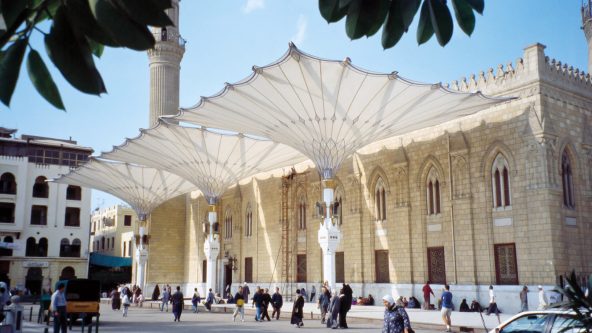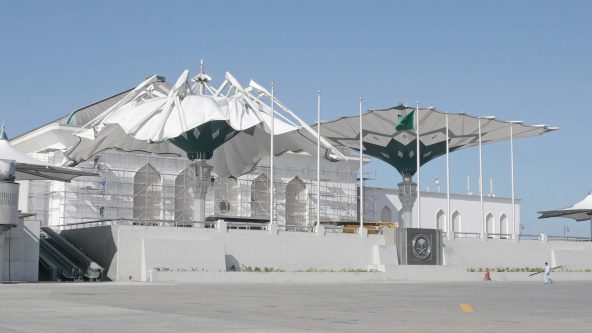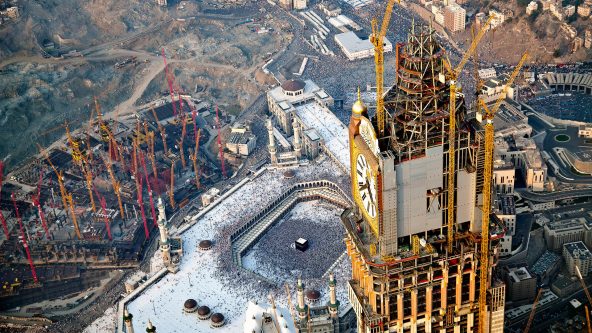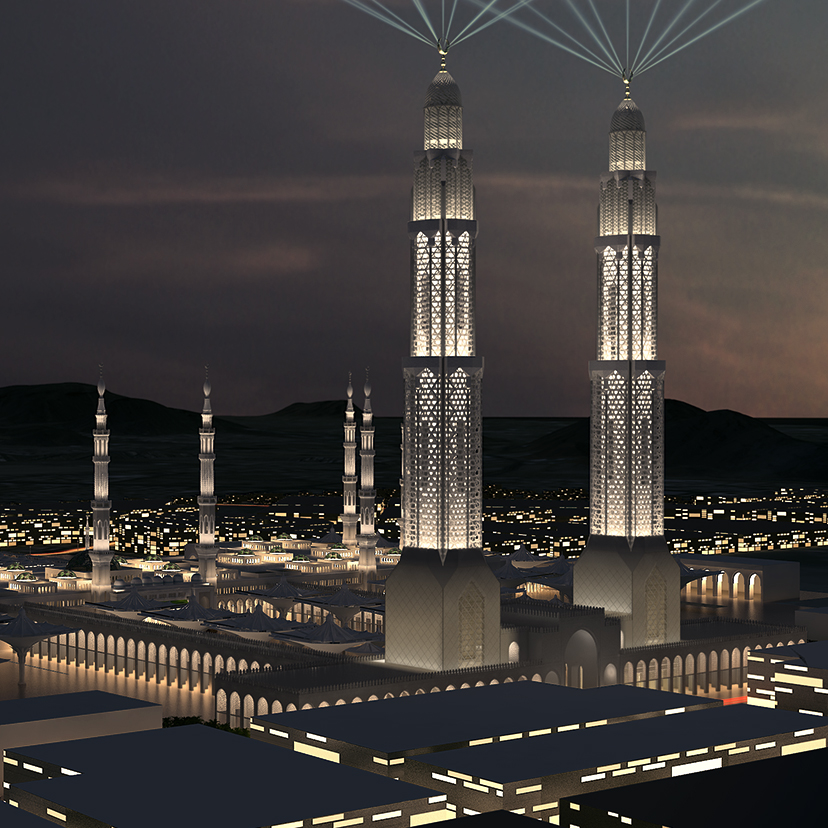
City Gate
Concept for a gateway building at the mosque complex in Medina
As part of the second Saudi expansion of the highly revered Prophet’s Mosque and tomb of Muhammad, SL Rasch had already implemented large movable domes to enhance the air-conditioning of the inner courtyards in the early 1990s. The next phase of expansion is to be completed with a majestic gateway complex. SL Rasch was commissioned to develop a design for the two approx. 500-metre-high towers.
In order to visualise the expansion of the mosque, SL Rasch suggested skyscrapers that combine traditional architectural elements with innovative technologies in a way that evokes minarets. Stylised mashrabiyas are the key element of the design. In traditional Islamic architecture, these decorative wooden panels served as window or balcony screens and as barriers in mosques. Besides providing protection from direct sunlight, they enable the people inside to look outdoors without being seen themselves.
The mashrabiya facade system of the skyscraper designs makes full use of this advantage: it combines the shading effect with wind load reduction, which is a particularly important aspect in this part of the world. At the same time, it creates a familiar yet unique aesthetic. Based on the principle of a tube within a tube, the main structure also permits the creation of a vertical void that integrates the concept of the Islamic courtyard into the towers and provides natural ventilation and light. The most structurally efficient and cost-effective solution – and a design with an aesthetic and functionality that harmonise with its regional context.
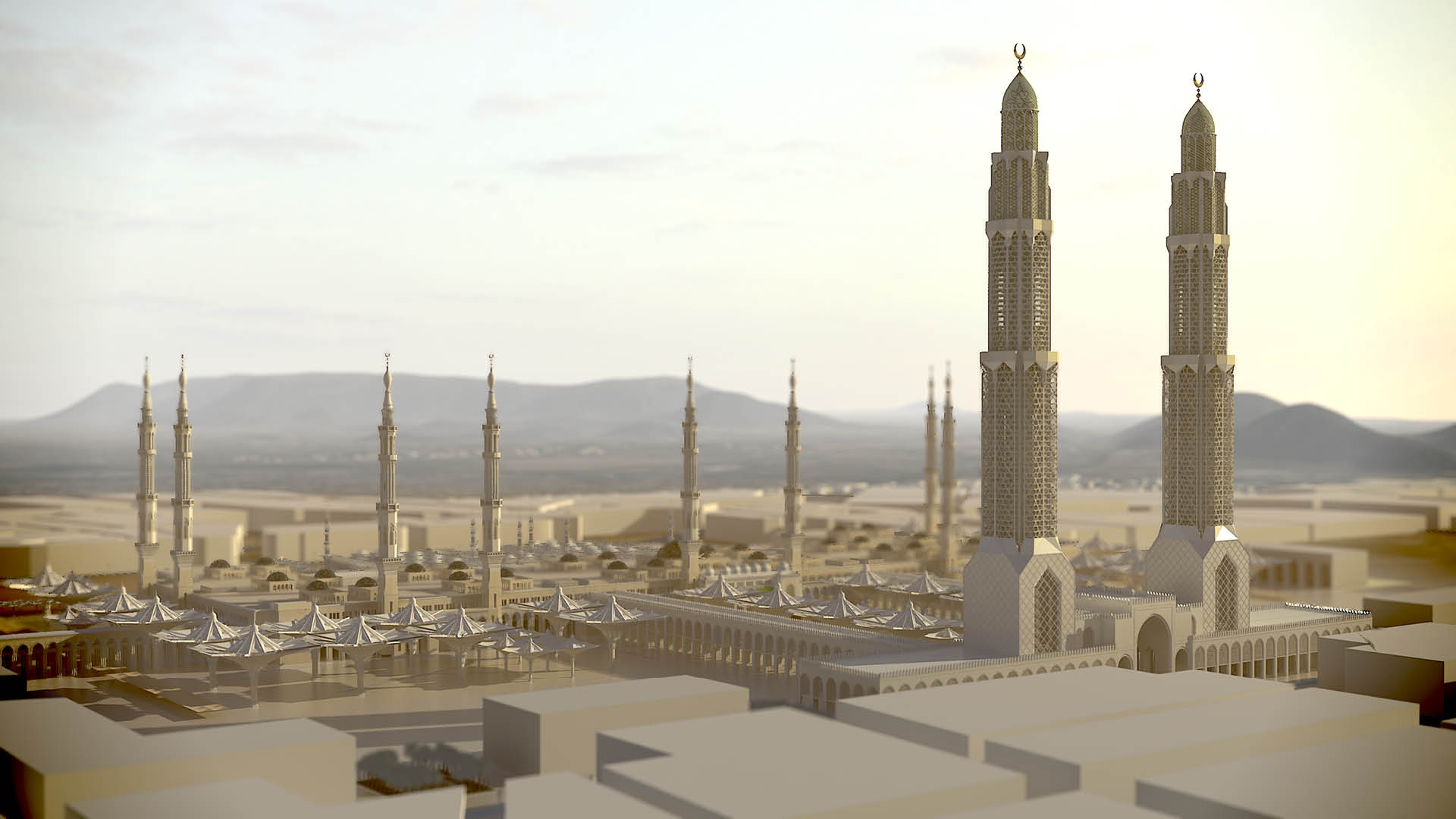 Skyscrapers shaped like minarets
Skyscrapers shaped like minarets
The two towers contain hotels, shopping malls, offices and apartments. They also provide large areas for use as public sky lobbies, as well as a breathtaking view of the mosque and the city of Medina. The towers are topped with sky gardens – a natural space in a sea of stone and concrete.
 A contemporary interpretation of local tradition
A contemporary interpretation of local tradition
The large gateway building closes the mosque complex off from the city and cites a traditional element of Islamic architecture in the form of mashrabiya-style cladding.

